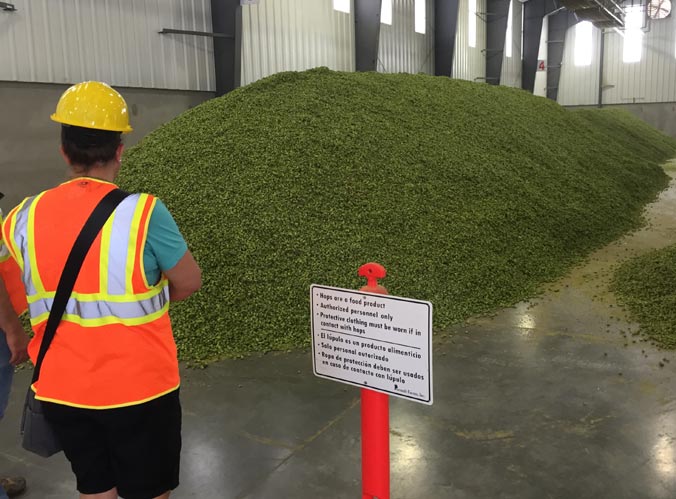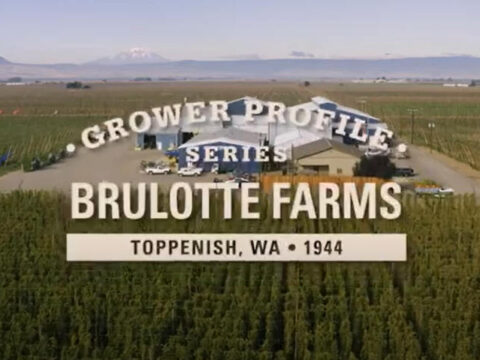There’s no getting around it. This year’s National Hop Report from the USDA shows nearly uniform reductions across the board. The declines were intentional and expected. This signifies a period of adjustment in the hop industry. It does not necessarily speak to the beer industry directly, as I explain below. Like most things in life, the correlation is not as simple as we might assume.
- Production for the United States in 2024 totaled 87.1 million pounds, down 16 percent from the 2023 crop of 104 million pounds.
- Area harvested for the United States in 2024 totaled 44,793 acres, down 18 percent from the previous year.
- Harvested acreage decreased in all states.
- The United States hop yield, at 1,944 pounds per acre, is up 29 pounds from a year ago.
- The 2024 production value for the United States totaled $446 million, down 21 percent from the previous year.
Why the Decline?
While these reductions may sound alarming, it was intentional. Farmers dedicated less acreage to hops this year. As previously reported, the hop industry has been overplanted in recent years. This led to a surplus of hops on the market. As the craft beer industry has changed, demand for hops has declined. This is not entirely due to attrition or a decline in the number of craft breweries. It is more a result of consumer habits and the end of a period of unsustainable growth in the craft beer industry.
The aftermath of the haze craze.
A few years ago, hazy IPA was a very popular beer style, and many people assumed the public’s fascination with it would continue. That style of beer is notoriously hop-centric. It might take as much as twice the poundage of hops to produce a hazy IPA compared to a West Coast IPA, for example. The haze craze spawned a period of irrational exuberance among hop growers.
In the wake of the haze craze, which is clearly now subsiding, less hoppy beers have gained popularity. Consumers have relaxed back into more traditional lPAs. Light and pale lagers have also gained favor. This is one of the factors that contributed to the craft beer industry needing fewer hops. Farmers are adjusting accordingly.
2024 Hop Crop Highlights
- Hop production in the U.S. totaled 87.1 million pounds. This is down 16 percent from the previous year (104 million pounds).
- The area harvested totaled 44,793 acres. This is down 18 percent from the previous year.
- The U.S. harvest yielded 1,944 pounds per acre. This is up 29 pounds per acre from the previous year.
- The value of this year’s crop was $446 million. This is down 21 percent from the previous year.

As usual, the USDA reported on hops grown in Washington, Oregon, and Idaho. These three states account for virtually all hops commercially grown in the U.S. Washington’s 2024 crop was valued at $329,671 million. Oregon’s crop at $56.604 million. Idaho’s at $68,530 million.
Certified USDS organic hops took a particularly big hit this year, continuing a precipitous downturn that has seen acreage cut in half over the past three years. In 2024, farmers harvest 482 acres of organic hops. In 2022, they harvested 982 acres. This creates difficulties for breweries that offer certified organic beers.
Most Popular Varieties
To examine the most widely grown varieties, I turn to Washington, where farmers produced approximately 73 percent of the hop crop. Farmers in Washington harvested 35 different varieties of hops this year. No one should be surprised to learn that Citra was the most-grown hop variety; its popularity endures.
- Citra 4,906 acres.
- CTZ 4,627 acres. (CTZ is a widely used but often-unrecognized hop variety).
- Simcoe 2,873 acres.
- Mosaic 2,459 acres.
- HBC682 2,429 acres (A popular but still-unnamed variety. It will likely have a name soon).
- Cascade 2,271 acres.
- Centennial 2,026 acres.
































